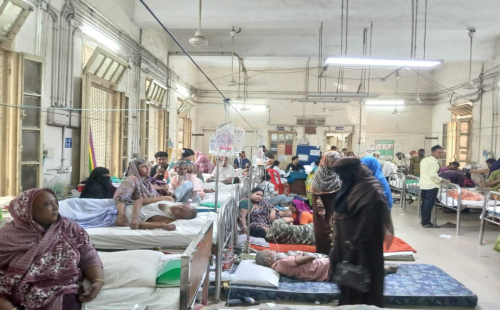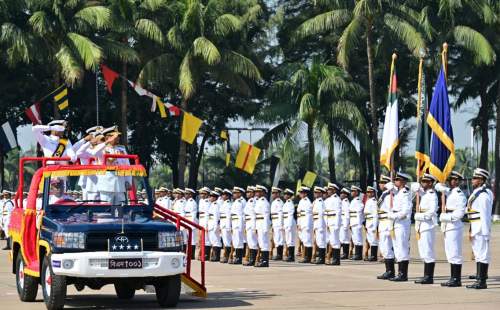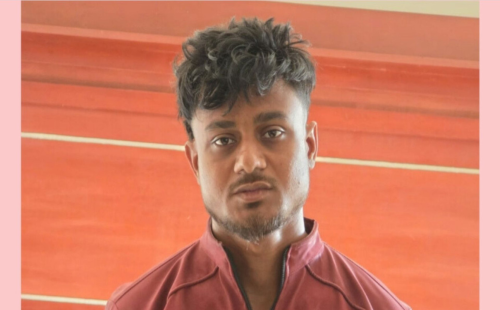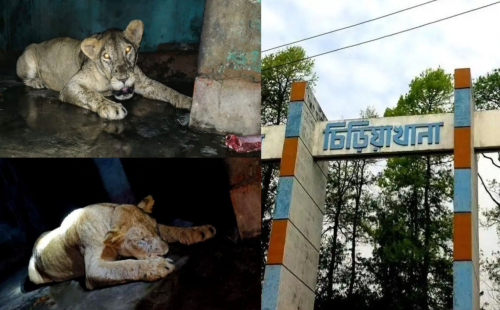The budget must invest more in people

Around June last year the
country was deep into the first wave of coronavirus infection. Yet, the
government could at least present the budget for the fiscal year 2020-21
despite acute health challenges.
I must say the government
demonstrated a commendable coordination between the fiscal and monetary
policies and managed to cope with the pandemic-induced economic slowdown better
than most other countries.
The government declared numerous
stimulus packages worth about 4.4 per cent of GDP with potent and timely
support from the central bank. As a result, supply of liquidity in the market
was maintained and even increased in a manner so that there was no pressure of
rising inflation in sight.
Import was low, and the economy
was running at less than full capacity. So, there was no threat of inflation
uptick.
However, for the coming FY
2021-22, the core challenge will be how best to utilise this surplus liquidity
when the demand may have nosedived due to another round of strong lockdown.
And this time fiscal policy
measures will be more important as there is a slump in the demand side of the
economy. The government is apparently aware of this predicament and has
therefore allowed the continuation of construction activities related to
infrastructures even during the lockdown.
Similar prudent policy direction
must prevail even for small infrastructures like the reconstruction and
maintenance of rural roads, culverts, bridges, school buildings, digging of
ditches and strengthening riverbanks to create more employment and bolster
domestic demand.
The social protection measures
must also be revamped at the same time.
With the budget session of the National Parliament around the corner, it
appears that the government will have to once again present the same amid a
pandemic unless we can defeat the virus comprehensively.
However, we are optimistic that
the policymakers, based on their past experiences of facing the first wave,
will be able to come up with a budget which will guide the country in the right
direction despite this crisis.
But what still worries us the
most is that people have become too complacent and not always adhering to
health measures that are so vital when there is a surge in infection.
And here comes the need for the
whole society approach to raise the consciousness of the people. Bangladesh is
well-known for its capacity to fight disaster. Why should we then be laggard
this time? Surely, we can fight it out provided we all stand together and do
the needful.
Like last year, the upcoming
budget must also focus primarily on healthcare. Over the last few fiscal years,
although the health budget allocations have been increasing by around BDT 2,400
crore per year, the share of the health sector in the total national budget has
still been staggering at around 5 percent.
This 'business as usual' for the
health sector will not do. This share must be increased significantly not only
in the coming budget but also for another two to three years to give a signal
to the world that Bangladesh is prepared to invest more on the people.
We must also be very careful
about identifying the avenues to spend the additional allocations.
For example, as per the
Household Income and Expenditure Survey 2016 data - of all those suffering from
health problems in Bangladesh, 12 percent do not seek any kind of formal
healthcare. This ratio is almost double (23 percent) for metropolitan areas.
Moreover, survey data also
reveals that only 14 to 19 percent of the inpatients rely on government health
facilities. Data such as these clearly point towards the directions where
increased budget allocations should go.
Like the health sector, the
education and skills development sectors also require special attention in FY
2021-22. These sectors are also facing critical challenges due to
pandemic-induced shutdowns. Indeed, the onslaught on education has been no less
devastating than the health sector. Maybe, more.
However, to increase the size of
the budget as required we must also increase the pace of our revenue
collection.
The 8th Five Year Plan has set
the target tax-GDP ratio to be 12.3 percent, which experts perceive to be much
lower than what it should be. I believe we could easily attain a 15 percent
tax-GDP ratio within the plan period if we could focus more sharply on the
efficiency of NBR and the available digital technology.
Like last year, the upcoming
budget must also focus primarily on healthcare. The photo was taken inside the
2,000-bed Bashundhara Covid-19 temporary hospital. PHOTO: MUMIT M
In addition, we could generate
additional revenue by adopting innovative approaches as well. For example, if
the declared retail prices of tobacco products are significantly increased and
specific supplementary duties are imposed on those prices, not only will the
government be earning an additional BDT 34 billion in revenue, but also 2
million people could be saved from smoking.
Similarly, if the revenue
generated from the 1 percent Health Development Surcharge imposed from tobacco
products could be channeled to the health sector and spent well in
collaboration with non-state organisations, particularly for consciousness
raising, this could really be helpful in coping with the pandemic.
Also, the pace of vaccination
must be accelerated to contain the virus, which will help raise the business
confidence.
Implementation of the budget is
as important as collecting additional revenue. Recent reports in mass-media
have revealed that of the BDT 10 thousand crore stimulus package previously
declared by the government to support poor households, 56 percent is yet to be
distributed.
This clearly implies that we
have got to enhance our governance capacity to improve the efficiency in
implementation of safety net programs. Otherwise, prudent policy initiatives
alone will not yield desired outcomes.
Finally, I would like to put
forward some additional proposals for the budget of FY 2021-22 to make it
operationally smarter:
Pilot large-scale health
insurance programs based on the experiences gathered from the pilot programs in
three upazilas of Tangail with support from development partners. Go for
creating a regulator for coordinating the same.
Initiate smart monitoring using
digital dashboard to understand the pace of implementation and end-use of the
stimulus packages. Bangladesh Bank is claiming to have completed developing one
such dashboard for monitoring implementation of stimulus packages for MSMEs.
The proposed financing of start-ups should also be monitored similarly by the
central bank.
Ease the conditionalities for
buying national savings instruments (may be up to BDT 1 million) for at least a
certain period (may be for 6 months) to incentivise depositors who have been
badly affected by the liquidity glut. The stimulus packages helped only
borrowers and not depositors. Tax identification number (TIN) related
conditionalities may also be eased for small depositors including the kids
involved in school banking who too are forced to pay 15 per cent taxes for
deposits.
Increase public expenditure for
infrastructure development. This will channel money to the people all over the
country. Indeed, infrastructures are both growth and employment multipliers.
Encourage further utilisation of
digital financial services to curb the cost of printing money. For example, the
Merchant Discount Rate (MDR) paid by the small merchants to banks (when
customers pay through QR quotes of mobile financial services) could be
exempted. If needed, create a fund (as was done by RBI) to subsidise the
micro-merchants opting for digital payments.
Further utilise Mobile Financial
Service (MFS) to channel money to the poor for smart social protection. The
beneficiaries could be targeted through analysis of their MFS activities using
artificial intelligence (monthly bill payments, flexi loads etc.).
The 'ten taka per kilogram of
rice' program has been found to be very effective. For the coming fiscal year,
this program should be further expanded at least in urban and industrial zones.
A 'hotline' could be established so that families suffering from hunger could
contact public administration.
BSEC has already initiated the
Green Bond worth BDT 100 crore. This initiative needs to be further expanded
(more bonds could be floated in the market) to mobilise resources domestically.
Continue food and cash support
for the urban poor using local government representatives, NGOs, community
leaders and government officials during the lockdown.
As rightly emphasised by the
HPM, our primary target now should be how to save lives. Hence, instead of
worrying too much about growth and budget deficit for the next fiscal year, we
must focus on increasing the purchasing power of the people.
If we can do that, not only will
the people be saved but also the increased domestic demand pushed by the fiscal
measures will ensure macroeconomic vibrance and stability, defying the
pandemic.
*The writer is the Bangabandhu
Chair Professor of Dhaka University and former Governor of Bangladesh Bank.
















